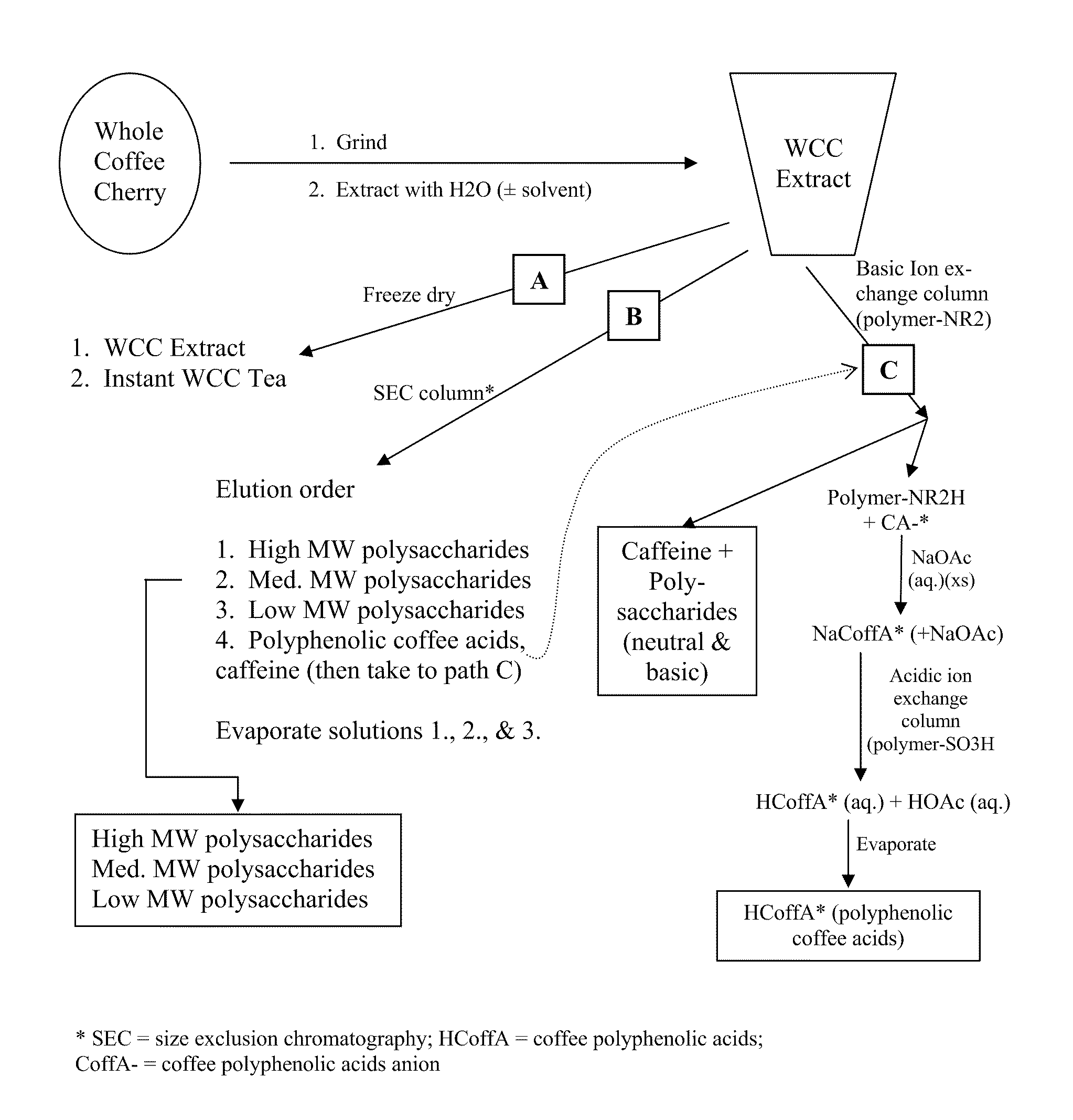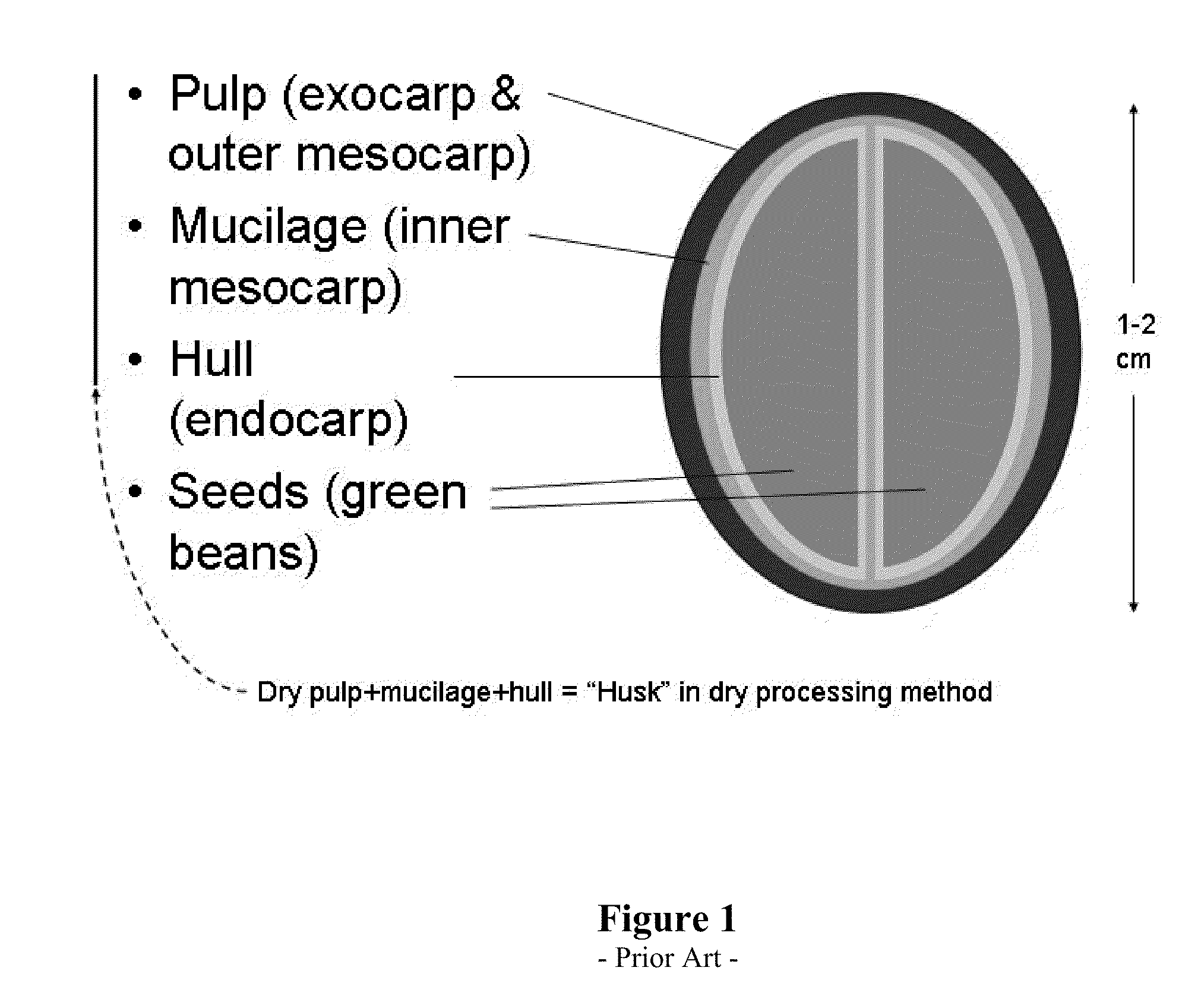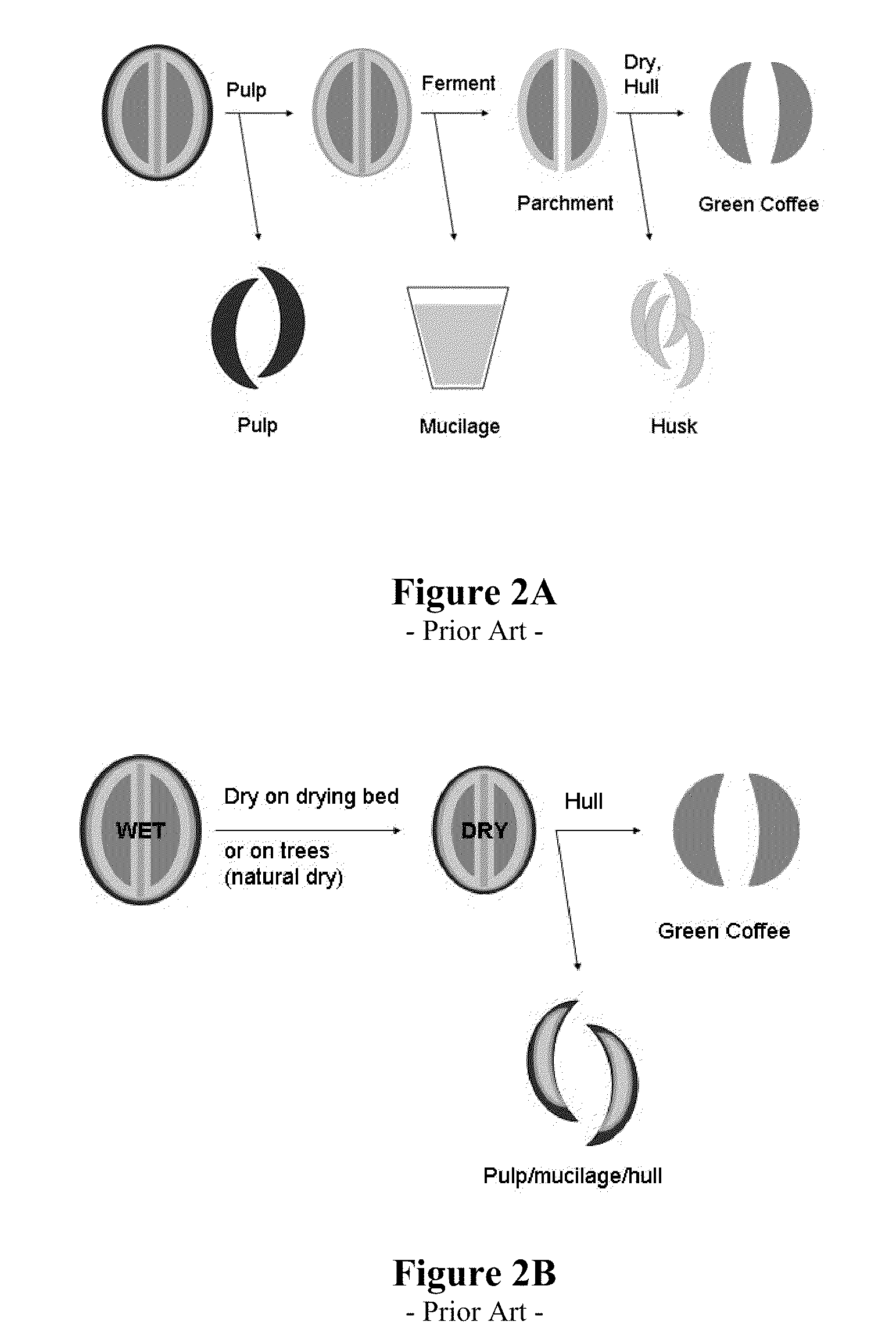Methods for Coffee Cherry Products
a technology of coffee cherry and coffee pulp, which is applied in the field of coffee cherry product manufacturing, can solve the problems of corroding equipment, affecting equipment, and affecting the quality of coffee cherry products, and achieves the effect of low content of mycotoxins
- Summary
- Abstract
- Description
- Claims
- Application Information
AI Technical Summary
Benefits of technology
Problems solved by technology
Method used
Image
Examples
examples
[0056]The following examples are provided to enable a person of ordinary skill in the art to make and use compositions according to the inventive subject matter and to illustrate exemplary compositions and methods generally described herein.
Harvest of Whole Coffee Cherries
[0057]The ripeness of the coffee cherries was determined by visually estimating the amount of green and red color (or yellow, where applicable) of the whole cherries. As the cherries ripen, the green cherries will typically increase in size and subsequently develop increasing amounts of red color. For the present examples, the coffee cherries were collected at four stages of ripeness: Completely, or almost completely green (unripe; typically less than 5% of the coffee cherry red or yellow), primarily green with some red (semi-ripe, stage 1; typically less than 25% of the coffee cherry red or yellow), primarily red with some green (semi-ripe, stage 2; typically less than 25% of the coffee cherry green), and unbroken...
PUM
 Login to View More
Login to View More Abstract
Description
Claims
Application Information
 Login to View More
Login to View More - R&D
- Intellectual Property
- Life Sciences
- Materials
- Tech Scout
- Unparalleled Data Quality
- Higher Quality Content
- 60% Fewer Hallucinations
Browse by: Latest US Patents, China's latest patents, Technical Efficacy Thesaurus, Application Domain, Technology Topic, Popular Technical Reports.
© 2025 PatSnap. All rights reserved.Legal|Privacy policy|Modern Slavery Act Transparency Statement|Sitemap|About US| Contact US: help@patsnap.com



